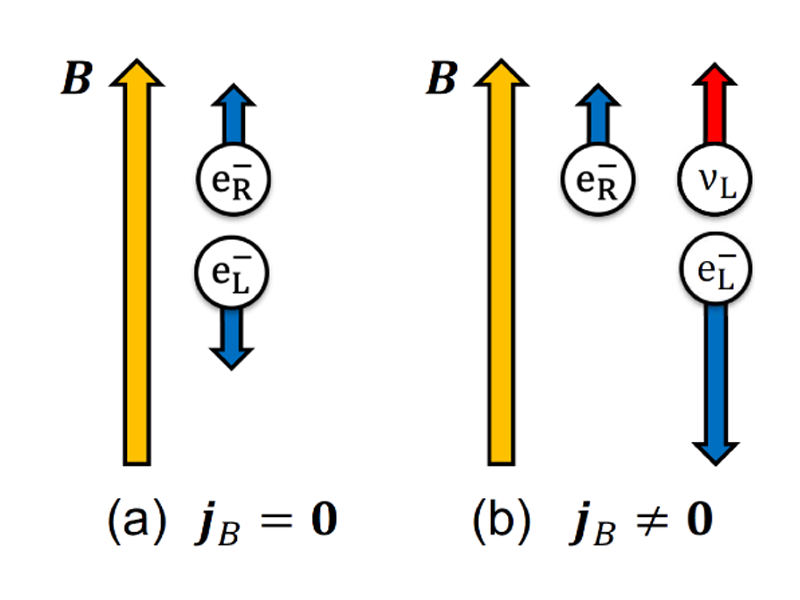Effective Chiral Magnetic Effect from Neutrino Radiation
Core-collapse supernova explosions with the observed explosion energy, pulsar kicks for neutron stars with large velocities, and the origin of strong and stable magnetic fields in magnetars are three long-standing puzzles in astrophysics. It has been recently proposed that the inclusion of chiral effects for left-handed neutrinos and electrons, which interact through the weak interaction that globally breaks parity symmetry, could result in dynamically enhanced magnetic fields, momentum asymmetry for pulsar kicks, and the inverse cascade qualitatively favoring supernova explosions such that the three puzzles may be potentially explained in a consistent theoretical framework. The essential ingredient for such a scenario is the electric and energy currents along magnetic fields, known as the chiral magnetic effect (CME). In most literature, the CME is obtained in quasi-equilibrium conditions with a chiral chemical potential characterizing chiral imbalance, which is, however, an unpractical condition in core-collapse supernovae with nonequilibrium neutrino radiation. It is thus indispensable to generalize the conventional CME to an out-of-equilibrium state applicable to core-collapse supernovae.
Dr. Di-Lun Yang from the Institute of Physics, Academia Sinica, Taiwan, and Prof. Naoki Yamamoto from Keio University, Japan, develop a novel approach to chiral kinetic theories for electrons close to equilibrium and neutrinos away from equilibrium based on a systematic power counting scheme for different timescales of electromagnetic and weak interactions. They derive an effective CME for the charge current and energy current parallel to the magnetic field from general nonequilibrium neutrino radiation, distinct from the conventional CME requiring a chiral chemical potential. Moreover, they apply this framework to the so-called gain region of core-collapse supernovae. They find that persistent neutrino emission in time can substantially enhance the effective CME, which could engender the inverse cascade of magnetic and fluid kinetic energies and pulsar kicks with the observed magnitudes. This theoretical framework may also be applied to other dense-matter systems involving nonequilibrium neutrinos.
This study has been published in Phys. Rev. Lett. 131, 012701 (2023)

Journal Links: https://journals.aps.org/prl/abstract/10.1103/PhysRevLett.131.012701